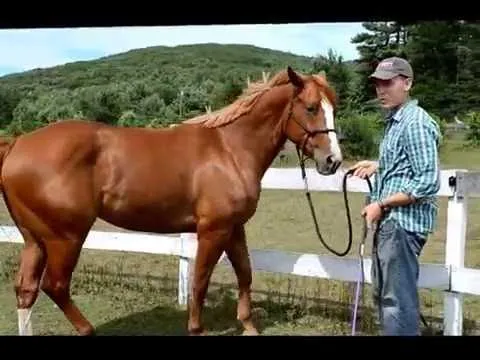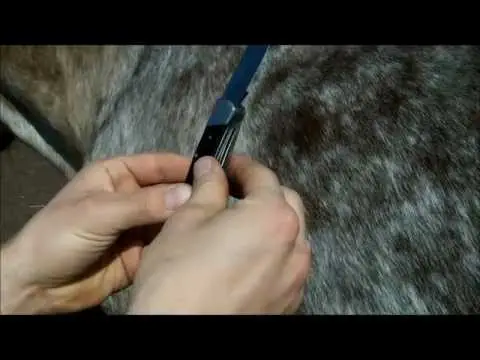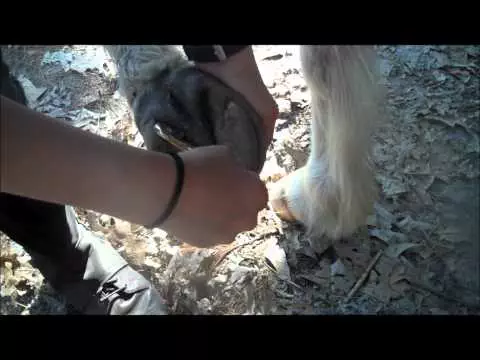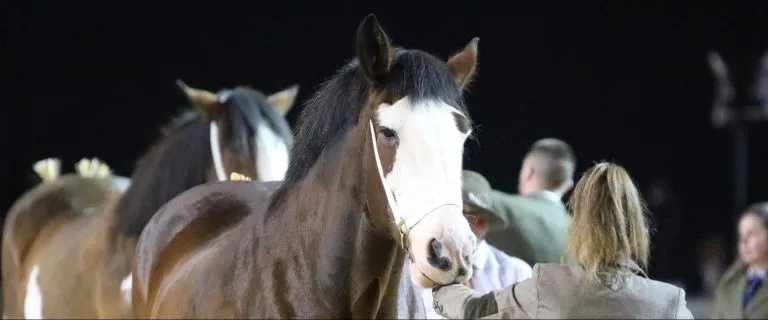The Morgan Horse – An Athletic Breed That Excels at a Wide Range of Sports
The Morgan horse is an athletic breed that excels at many sports, such as harness racing, dressage, cutting cattle, endurance trails, and carriage driving.
This breed is a top choice for amateur and professional athletes due to its calm disposition, ease of training, and versatility. They make excellent companions for riders of all levels of expertise.
Origin
The Morgan horse is one of the oldest horse breeds in America and one of its most versatile. Their athleticism allows them to excel at a variety of equine events, while their calm temperament makes them ideal for family use.
The breed’s history began with a bay colt named Figure, given to a schoolmaster in West Springfield, Massachusetts, in 1789. Although he stood just over 14 hands tall for a Morgan, this horse quickly proved himself an incredibly versatile and loyal partner – winning races, pulling stumps, being used as a favorite parade mount at militia training exercises – eventually earning himself the name “Justin Morgan Horse.”
- Dark Oil Argentina Cow Leather – Double Stitched & Smooth
- Headstall, Breast Collar & Wither Strap
- Teal, Brown & White Navajo Design Beaded Inlays
- Brushed Nickel Conchos
- For an Average Full Size Horse
Last update on 2024-04-09 / Affiliate links / Images from Amazon Product Advertising API
The figure passed along his good looks, athleticism, and friendly demeanor to his offspring, eventually creating the Morgan horse breed. He is believed to have inherited his bloodlines from Arabian, Thoroughbred, Welsh cobs, and possibly Friesian horses.
Today’s Morgan is a hardy breed renowned for its endurance and ability to work all day. Additionally, they make excellent pets due to their easy-keeping qualities and heart and strength that exceed their size – qualities that made them popular with early American settlers.
Though they’re not as common as some other breeds, Morgan horses can be found across America and registered with the American Morgan Horse Association. Morgans come in various colors like bay, black, brown, chestnut, gray, palomino, cremello, perlino, dun, and buckskin.
Breeding for sound conformation and athleticism, qualities that make up a robust and well-balanced horse. A Morgan should have an expansive head with a high forehead, large eyes, and short ears spaced apart from each other.
Morgan horses must possess a powerful, well-muscled body, an upright neck, and a deep chest. This set them apart from other light horse strains explicitly bred for specific activities like racing or roping.
The Morgan horse breed is a historic heritage breed that has had an immense impact on American horse breeding. Their versatility and endurance set the bar for other breeds, such as the American Quarter Horse, Standardbred, Tennessee walking horse, and English Hackney horses.
Characteristics
The Morgan is an impressive breed that excels in many equestrian activities. They are commonly used for show and pleasure disciplines, trail riding, ranch work, and therapeutic riding programs.
They are strong, well-muscled horses with expressive heads and graceful necks. Generally bay, black or chestnut, but have also been known to exhibit colors like gray, palomino, perlino, dun, and roan.
Morgans are intelligent and alert horses, making them suitable for beginner and experienced riders. Additionally, their calm nature allows for easy training with minimal fuss.
Type and confirmation are two of the essential characteristics to look for when selecting a Morgan. These traits define this breed and should be present among all members.
A proper Morgan should have an expressive head with large, prominent eyes, a straight or slightly convex profile, and a broad forehead. The ears should be short, shapely and set rather widely apart.
A stallion’s crest should be more prominent than that of a mare. The withers should be well-defined and proportionate to the shoulder’s angulation, with no croup higher than these landmarks.
Legs should be straight with short cannons and relatively long forearms. Pasterns should be proportionally long in relation to the cannons, with enough length and angle to create a springy step.
They should also exhibit a prominent spring of ribs and well-defined buttocks.
Morgans are one of the longest-lived breeds, with an average lifespan of 20-30 years. Additionally, they tend to be relatively healthy breeds with few cases of equine diseases. Unfortunately, some Morgans can be susceptible to polysaccharide storage myopathy, which damages muscle tissue and may cause pain and stiffness when exercised.
Therefore, consulting your veterinarian before breeding a Morgan is highly recommended since this condition could be passed down through generations. Fortunately, most medical issues related to Morgans can be prevented through standard grooming practices and proper diet; these conditions usually go hand in hand together.
- Saddles Will Come With A Signature Required For Delivery
- 100% Premium Cowhide Leather
- Headstall, Reins, & Breast Collar Included
- Designed Right Here In Illinois
- Well Balanced Wood & Fiberglass Tree
Last update on 2024-04-09 / Affiliate links / Images from Amazon Product Advertising API
Breeding
The Morgan horse is one of America’s oldest breeds. Its popularity dates back centuries to 1789 when Justin Morgan, a blacksmith and music teacher, brought home Figure, his single stallion from Massachusetts. Since then, many generations have enjoyed its company.
He was a small bay stallion with muscular legs and shoulders, vivid eyes, prickled ears, a thick mane, and an easygoing temperament that made him the ideal farm horse. These traits were passed on to his offspring – giving rise to the Morgan horse breed today.
Morgans are known for being show and pleasure horses, but they can be ridden in all disciplines. They excel at English and western riding as well as reining, dressage, jumping, endurance events, and driving competitions.
Morgans are often utilized in therapeutic riding programs. They make excellent companions for children due to their quiet nature and gentle demeanor.
Morgans are known for their calm temperaments and are excellent candidates for clicker training. Additionally, Morgans tend to be more tolerant of new riders than most other breeds, making them an ideal choice for families with young children.
They are popular with novice riders and adults looking to hone their riding skills. Furthermore, these horses have a natural sense of direction and pace, making them perfect for trail riding.
The Morgan horse is elegant, often chestnut or bay in color, but also black, gray, palomino, perlino, cremello, dun, or silver dapple.
Morgans often come as halter-bred horses and can be ridden under saddle. Additionally, these versatile animals make ideal trail riders or ranch hands due to their ease of movement and efficiency.
Maintain the health of your Morgan by regularly exercising him and providing him with fresh water. You should also pay special attention to his hooves and feed him a high-quality diet.
A properly-fitting saddle will guarantee your horse’s comfort. It should be wide enough to cover both the back and front legs without being too narrow or long.
Health
Morgan horses are hardy creatures known for their endurance. While they can thrive on grass and hay without additional feeding, providing your Morgan horse with a balanced diet is essential to prevent obesity.
Justin Morgan, a Vermont farmer who dabbled in horse breeding as an extra income stream, created the first Morgan horse. Figure, was his stallion and an impressive little fellow that excelled at pulling and draft work.
Morgans can experience health issues like any other horse breed. When this occurs, it’s best to consult a veterinarian before purchasing or rescuing a Morgan.
Morgans may suffer from Cushing’s disease, an equine condition that causes weight loss and lethargy. Fortunately, this disorder is rare and easily treated with medication and a balanced diet.
Other health conditions that can impact Morgans include hypoglycemia and respiratory disease. These issues may arise due to overfeeding or an imbalance in your horse’s digestive tract.
Some Morgan horses may suffer genetic disorders that affect their coat color. These issues may alter the pigmentation of your horse’s coat, making it harder to maintain a healthy sheen.
Furthermore, Morgans may be susceptible to allergies and asthma. Moreover, they could be vulnerable to parasites and skin infections.
Morgans tend to be low-maintenance horses, despite some health issues. They’re easy to train and adaptable in various scenarios – such as being used for pleasure rides or as a lesson or therapy horse – making them great all-around horses.
Horse lovers enjoy these majestic beasts, which can be found worldwide. They make excellent family horses, and their versatility provides their owners with years of enjoyment.
The Morgan horse has a well-deserved reputation for being loyal, friendly, and socializing with people and other animals. They’re easy to train and can thrive in various settings, from rural farms to bustling urban centers.









